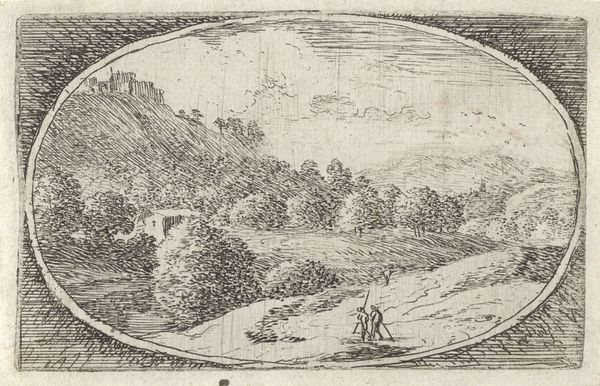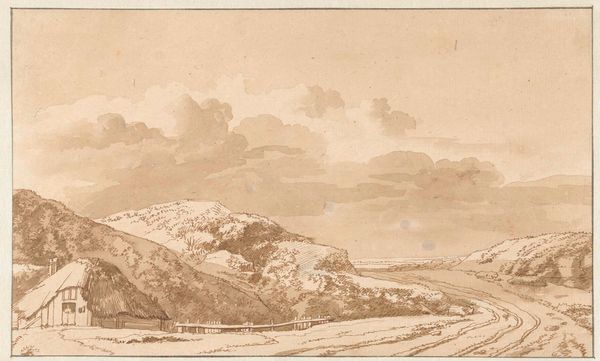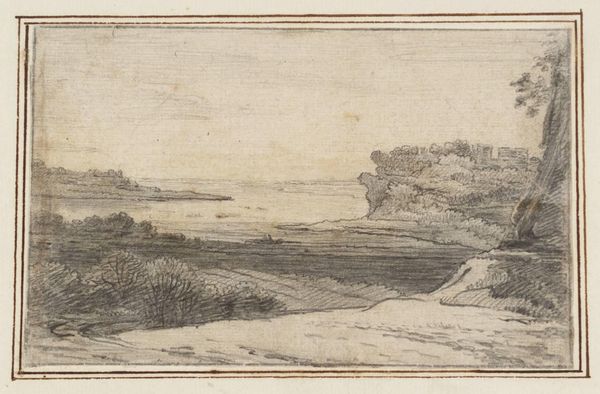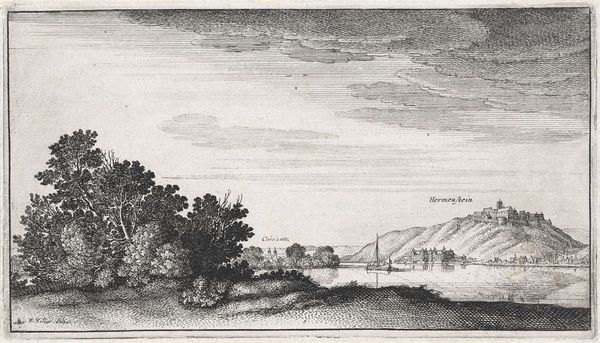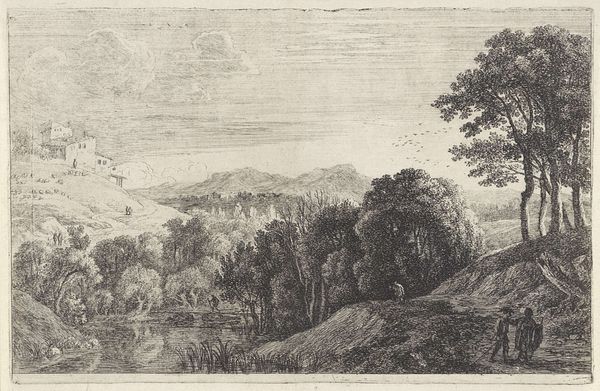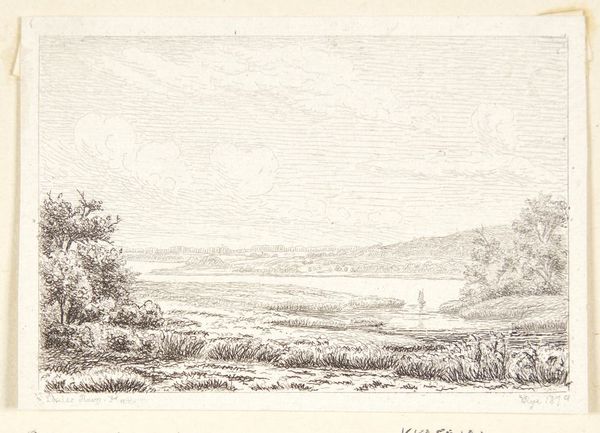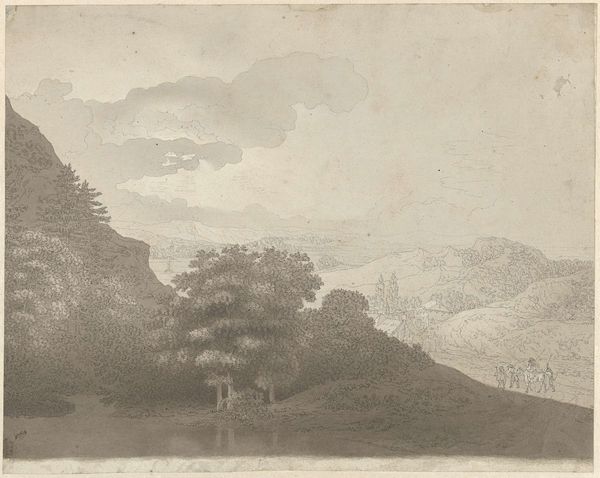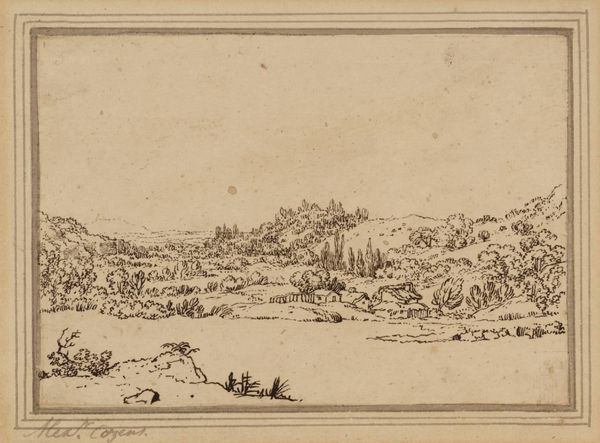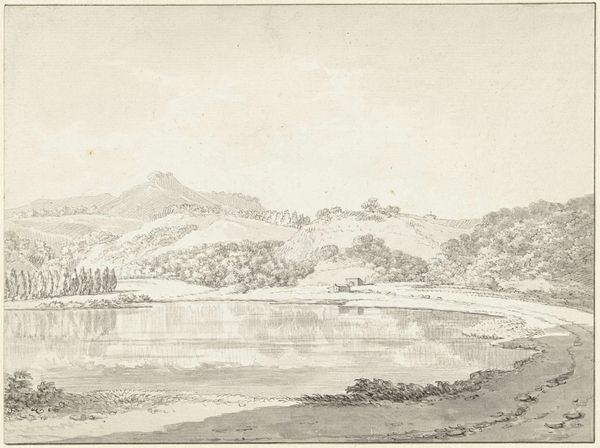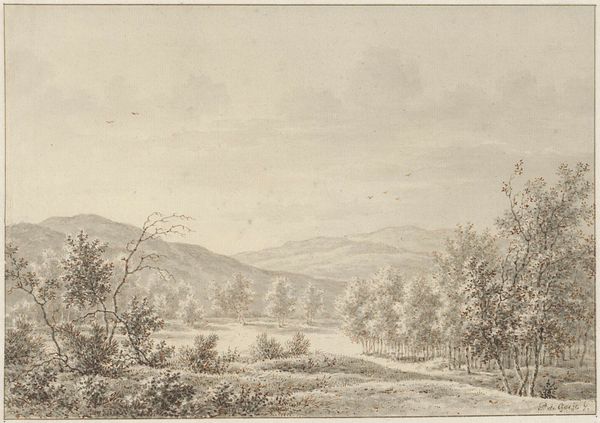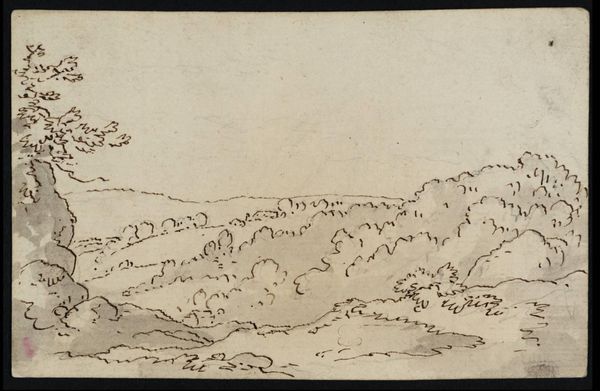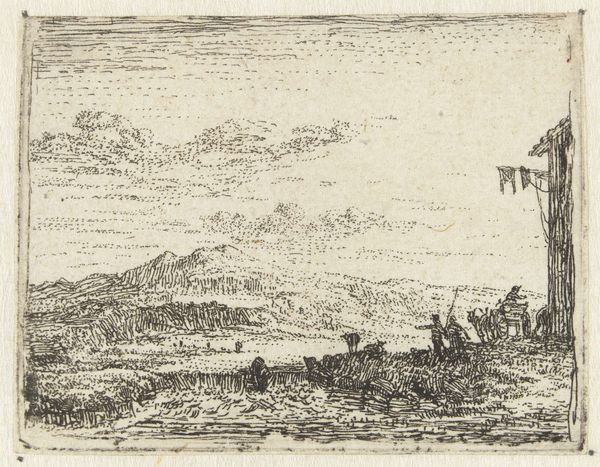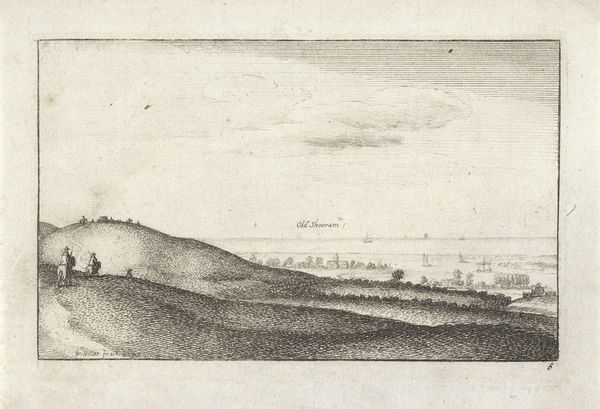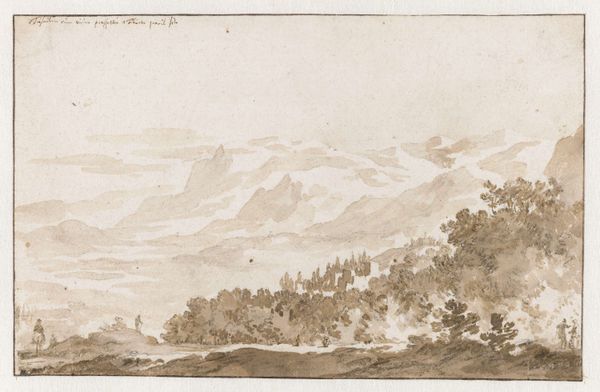
Landschap met gezicht op slot Rannariedl aan de Donau 1625 - 1677
0:00
0:00
wenceslaushollar
Rijksmuseum
print, etching
# print
#
etching
#
landscape
#
river
#
etching
#
history-painting
Dimensions: height 60 mm, width 137 mm
Copyright: Rijks Museum: Open Domain
Curator: Allow me to introduce "Landschap met gezicht op slot Rannariedl aan de Donau" by Wenceslaus Hollar, likely created sometime between 1625 and 1677. This etching is currently held in the collection of the Rijksmuseum. Editor: My immediate impression is one of quiet grandeur. The precise lines and intricate details create a sense of formality and control, despite the landscape's inherent wildness. The composition itself is masterful, guiding the eye across the vast expanse. Curator: I'm interested in how Hollar uses the print medium to translate the scale and specific iconography associated with landscape imagery. His precise use of etching techniques allows for incredibly detailed depictions, specifically when examining the buildings and natural landscape elements in conjunction with one another. Editor: I'm struck by how the image balances detail and atmosphere. Notice the textures, which invite contemplation of how structures symbolize human control amidst nature's power. I see visual echoes of the conflicts playing out across Europe during the period. What's your interpretation of that relationship? Curator: I am focused more closely on the image itself, without immediately relying on interpretations of socio-political impact or reference. For instance, it would be crucial to assess how Hollar's stylistic use of hatching and cross-hatching enhances the tonal variation within the composition, contributing to an enhanced atmospheric perspective. The subtle gradation creates depth, separating foreground and background elements. Editor: Yes, and perhaps these techniques allude to social control and hierarchical structure of the Danube during its time period. Do you find these forms of expression limit the accessibility of his commentary? Curator: While the techniques serve to reinforce the clarity and articulation of form, such techniques may not immediately limit, but rather augment how a careful consideration of detail guides more thoughtful art-historical interpretations, which serves to augment a detailed and careful understanding and approach to interpreting the artwork. Editor: Perhaps a productive lens for further investigation should explore how institutions legitimize narratives, considering shifts in interpreting historical accounts through works such as these prints. Food for thought, indeed. Curator: Yes, much to be further revealed within and between these meticulous lines and atmospheric depths.
Comments
No comments
Be the first to comment and join the conversation on the ultimate creative platform.
